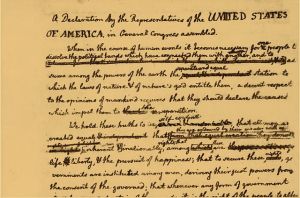The world’s oldest paper
My publisher at Green Writers Press is floating the idea of printing Old New Worlds on hemp—and my instinctive response of “oo!” has quickly turned to Google.
“Hemp hurds are favorable in comparison with those used with pulp wood.”
– Jason L. Merrill, U.S. Department of Agriculture chief scientist in 1916
So what on earth is a “hurd?” Actually, let’s go back even further, what exactly is hemp? Oh! Hemp is part of the Cannabis species. But before we get too excited, industrial hemp is evidently a different strain from the Cannabis-as-a-drug variety, which has greater amounts of that chemical that causes marijuana to affect your mind and/or behavior. And the industrial hemp hurd, then, is the inner core of the hemp plant stalk or stem, which they pulp to make paper.
Now, here is the really big takeaway: hemp is hugely environment friendly. It requires minimal care; it can adapt to most climates; and it is much more eco-friendly and sustainable than tree paper because it can be produced more quickly than trees—hemp stalks grow in 4 months, whereas trees take 20-80 years. This absolutely ties in with the ethos of Green Writers Press, whose mission is to print sustainably. Even now, their books are printed with soy-based inks on paper made from pulp that comes from post-consumer waste paper. The GWP motto is:
“What the localvore movement did for the food industry, we want to be for publishing.”
And here’s the part I also really love about printing on hemp paper: it was the world’s first paper! The Ministry of Hemp site tells me that the first identified paper dates back to the early Western Han Dynasty—around 200-150 BC—and that, since then, hemp paper was used all across the world. The Gutenberg Bible, the first and second drafts of the Declaration of Independence, and the novels of Mark Twain were all printed on hemp paper. Then, in the 1930s, big synthetic textile companies and newspapers—going against the wisdom of Jason L. Merrill, quoted above—lobbied to prohibit the cultivation of hemp in the United States. And they succeeded.
So, let that not only be a lesson to us about dubious lobbying practices; let us also see if we can be part of the movement to turn the tide towards hemp paper again—along with indie publishers like Green Writers Press. I’d love to be part of that journey.
Tags:Booknotes







2 Responses to The world’s oldest paper